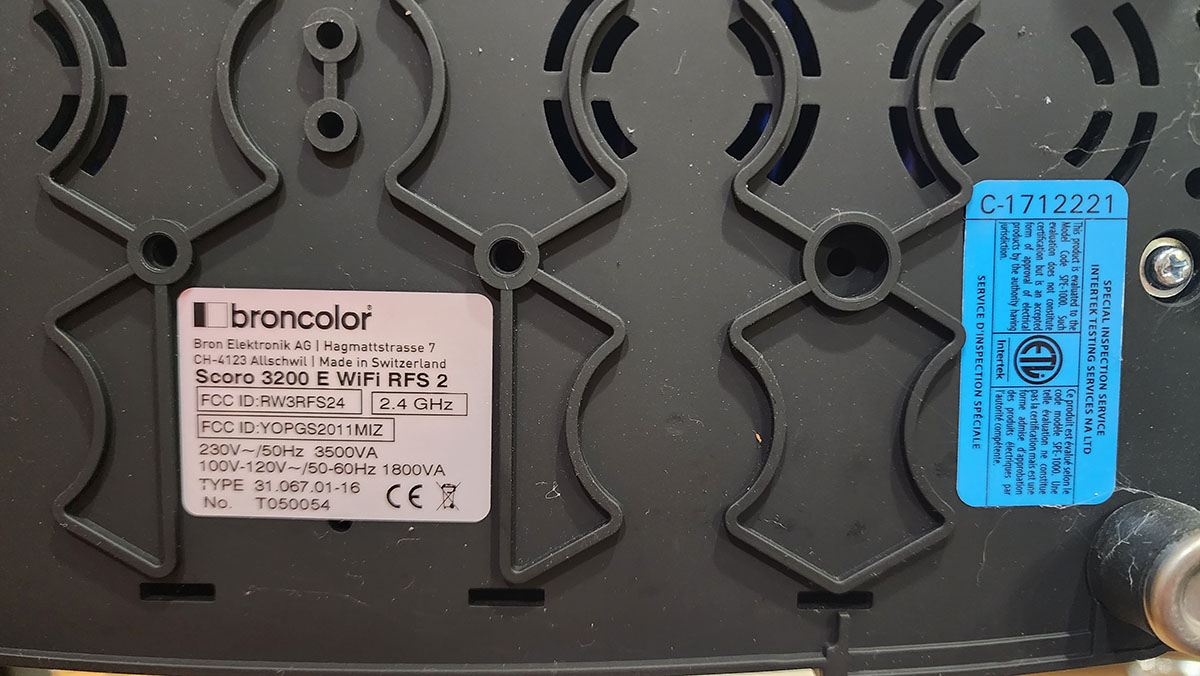Did you know that every electrical device that plugs into Canadian electric circuit must meet electrical safety requirements? Did you know that Canada has some of the most stringent electrical safety standards in the world? Why does this matter and just how important is it to you, the home photographer or you, the professional photographer? PHOTONews Canada reached out to Health Canada and Electrical Safety Authorities for each province and territory to find out for you.
According to Health Canada, the short answer is that electrical products sold in Canada must meet the requirements of a Canadian standard and thus have a recognized Canadian certification mark. This mark can be stamped or embossed on the product or a tamper-proof sticker attached.
Certification is a requirement under the Canadian Electrical Code (CEC), not the Canadian Consumer Product Safety Act (CCPSA) or any other Federal act. The CEC is not a piece of legislation but a “code”. It gets adopted into law by each province and territory in their own regulations. This means that each province and territory can have slightly different wording in their legislation as to how the CEC is applied to electrical products for sale in that province/territory.
For example, the province of Ontario has an electrical product safety regulation that has a clause that says something to the effect of “electrical consumer products must be certified as per the requirements of the CEC”. Thus, the requirements of the CEC have become law in Ontario. Every province would have something similar but each province might also tweak it a bit which gives rise to the possibility of inconsistencies across the country concerning certification. Another province may have an electrical product safety regulation that says “electrical consumer products must be certified by UL or CSA as per the requirements of the CEC”. In effect, that would mean that certification marks by Intertek (“ETL” mark) are not recognized in that province. Now you have different certification requirements in a different province. The product must still be certified, only they don’t recognize the same marks as Ontario.
Health Canada further stated “With respect to electrical consumer products, the CCPSA comes into play when a danger to human health and safety arises or false/misleading (counterfeit) marks are involved (sections 7 through 11). Certification lends credibility to the safety of the product, so certification is a valuable piece of evidence in determining whether or not the product is a danger to human health or safety. But as for the actual certification (and certification mark) itself, this is governed by provincial and territorial legislation.”
Our research shows that the provinces and territories all use similar wording in their legislation that refers back to the CEC. How they police that is very different. They all agree that if, during an inspection, a non-compliant product is found, that they will not allow that product to be energized. However, some provinces will make further sanctions against anyone using non-compliant products.
What does compliant and non-compliant mean to you, the photographer? The CEC dictates what the minimum safety requirements are for our electrical networks. Inside the plastic housings, all of the fuses, switches and connectors – and the material used to hold them together – must work and fail in a specified manner. There are significant safety risks and issues including very real death and fire risks.
As mentioned, Health Canada doesn’t enforce the CEC but they are responsible for the CCPSA. A few years ago, Health Canada issued a huge recall notice for USB wall chargers – the same ones we use to charge our phones and cameras and more. These chargers either weren’t inspected or had counterfeit inspection marks. They were found to overheat, leading to burns and fires and damaged property.
We all have Lithium Ion batteries in our cameras and many of our strobes and speedlights also have Li-ion batteries. The batteries themselves don’t need certification – the hardware has overheating protection. However, the chargers for those batteries must be certified. You may recall the Transport Canada ban, and then restrictions, on flying with Li-ion batteries or the recalls of Hoverboards and Electrical Scooters. Those chargers didn’t have overcharge protection, which is a requirement of our CEC, which resulted in injuries and fires.
I also reached out to the Insurance Bureau of Canada to get their input: “If there is a covered loss caused by a defective/unsafe product (e.g. fire), the insurance policy would pay for the resulting damage but not the cause of the fire – the product. If the product was defective and the insurer could prove that, they may attempt to subrogate from the manufacturer. There could also be some liability on the owner if they knew or ought to have known the product was not safe and damage was caused to others. That would depend on the insurer and your policy.”
To clarify, the insurance company will investigate any injury or damage and then determine fault. If you knowingly purchase and use an electrical product that doesn’t meet the CEC and then it causes harm, you could put yourself and your business at serious risk of financial penalties and coverage loss. The insurer could go after the manufacturer or distributor, but that only works if they are on Canadian soil. If you purchased this uncertified product direct from the overseas factory, the insurance company can’t go after the manufacturer which leaves the purchaser at risk. That’s a mighty big risk for saving a few bucks on an overseas product.
Best case scenario in this, assuming your insurer pays for all the damages, is that your premiums increase. Either way, it’s more money out of your pocket.
Approval Procedures
There are two methods that manufacturers and distributors use for approval – certification and special evaluation. Manufacturers handle certification during the build process – they use certified components and have a certification organization inspect their facility and processes. This allows the manufacturer to affix a certification seal or mark to their products. Certified products will either have a label with the correct mark or the mark will be a part of the product’s casting/housing.
If a manufacturer does not handle certification, a special inspection is arranged. This is usually how distributors handle photography gear. For example, when Amplis imports broncolor and Elinchrom products, they hire an inspector to visit their facility. The inspector examines the different products and then affixes a tamper-proof sticker, with a serialized number, to each product that meets CEC requirements for Canada. Devices that have undergone a field inspection will have a sticker attached.
Certification Marks
There are a myriad of certification marks for Canada (https://www.scc.ca/en/accreditation/approval-marks-electrical-products-safety) but they are all characterized by a small “c” at the 8 o’clock position. Some may also have a small “us” at the 5 o’clock position – this is an American mark that doesn’t apply in Canada.
How can you tell if a Certification Mark is legitimate? If it’s a label and it appears that it should have a serial number, you will see that unique number. For Markings, look for the small “c”. Refer to the link above for more information.
Why is this important to you?
Aside from the real risks of injury, fire and death, as well as financial risks in the event of an incident, photographers using gear that is certified as safe for use in Canada show they not only care about their customers but are serious about their work.
Is your livelihood, your reputation, your home, hopes and dreams really worth $50 in savings by buying an overseas brand that doesn’t put the same care into their products as you do into your passion?
Author: Will Prentice
A portrait, fine art and commercial photographer for 30 plus years, Will Prentice is not just a contributor to PHOTONews magazine, but also host of PHOTONewsTV, owner of Captura Photography+Imaging and Technical Support/Brand Manager for Amplis Foto, Canada’s largest distributor of photographic equipment.
Will teaches photographers of all skill levels how to improve their craft – from creative photo projects to picking the right gear for their needs to flattering lighting to getting the best expressions to creating final images for screen and print. His unique style of highly detailed images with perfect tonality, wide dynamic range and stunning colour is instantly recognizable. Commercial clients rely on Will’s creative eye and mastery of lighting.
When he’s not behind the camera or in front of a class, you’ll find Will outdoors in any weather – usually on one of his bikes or enjoying time with his grandchildren.












Hi…read your article…..good info for those who are not involved in the specification of electrical systems like I am…..re the Li-ion charges…..when I was in the UK this spring there was big controversy…..electric bikes have become very popular….it turns out that bikes that have been bought offshore do not have the overcharge protection as required….they sometimes catch fire….when you live in an urban centre where do you store your bike???….just inside the front door of your flat!!!….a fire blocks your exit….there have been deaths and many close calls….
Thank you for pointing out the hazards of the e-bikes, Richard. Nobody’s home or life is worth losing over a couple hundred bucks.
Our governments need to do better to block the importatation of these devices if consumers some do their own due diligence.